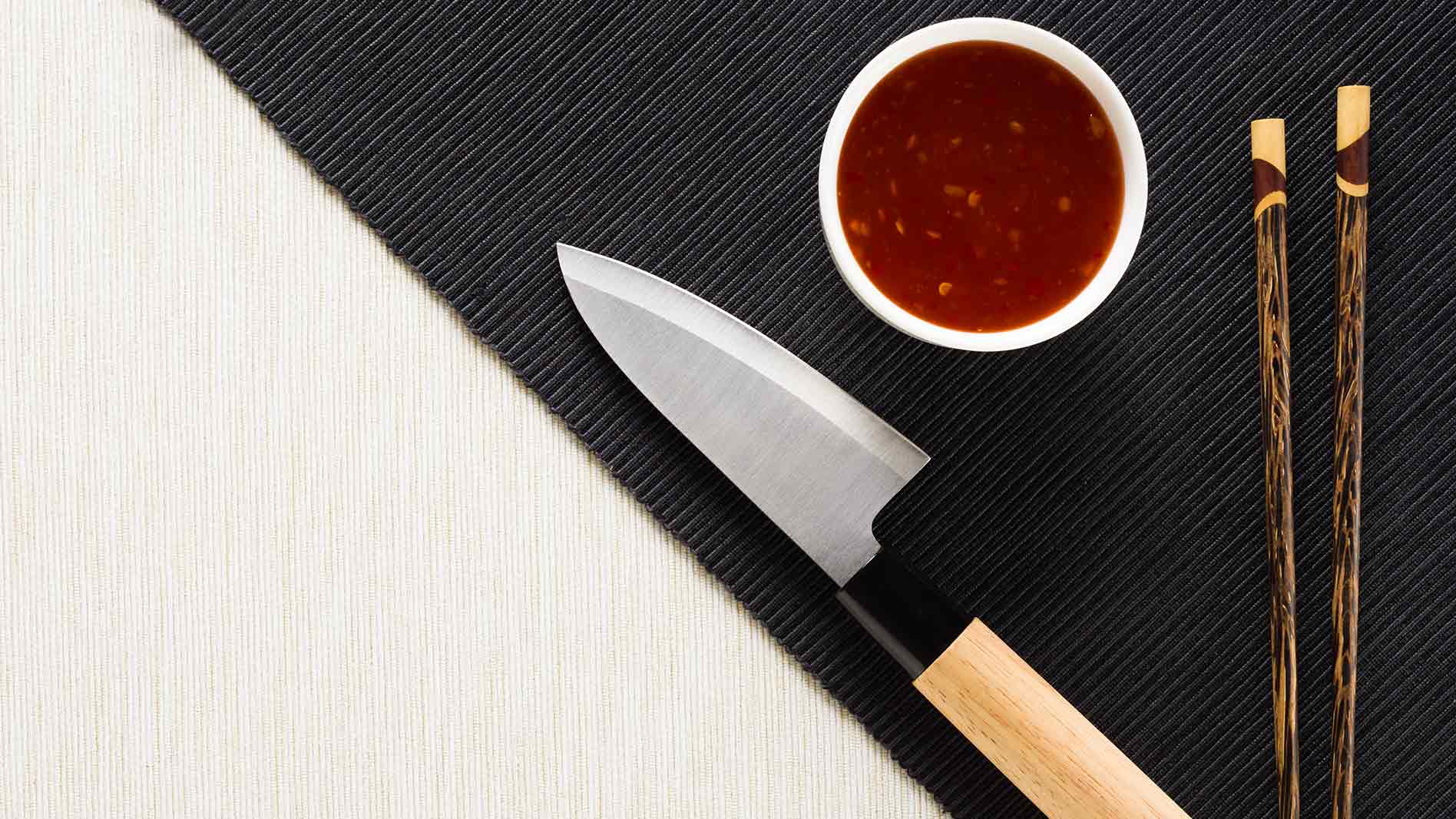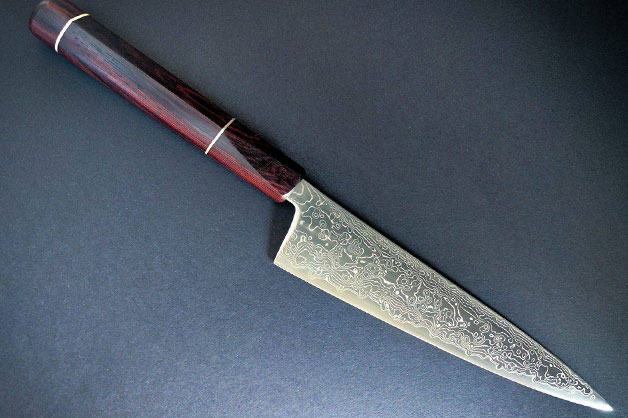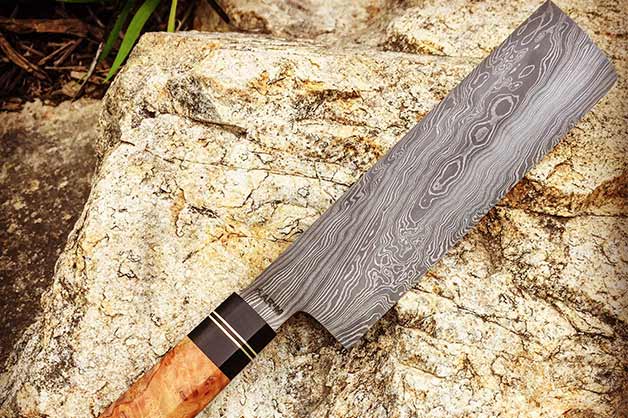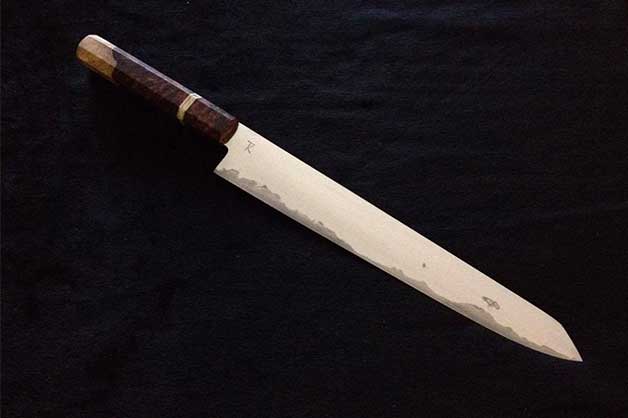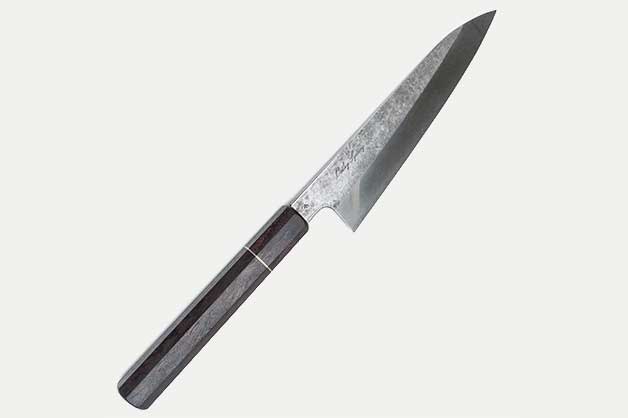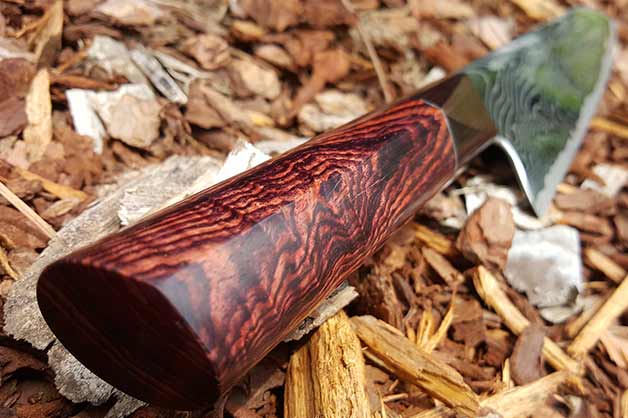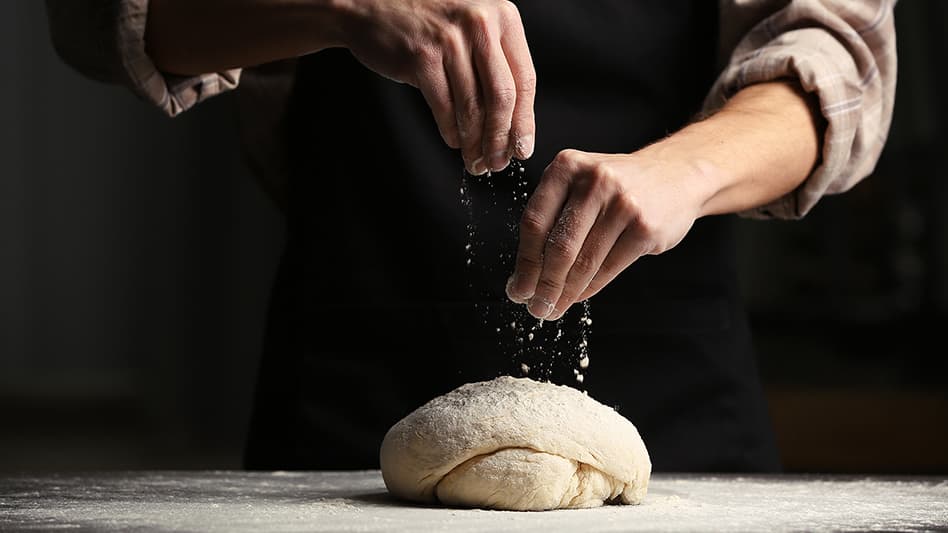Be inspired with recipes created by chefs.
Sign up for updates about products, special offers, news and promotional materials from Goodman Fielder.

Summary
Chefs the world over are starting to realise that some of the highest quality kitchen knives are being produced by Australian craftsmen. Precise, durable and good looking to boot, these blades respect both their produce and their user. We tracked down five of the east coast’s finest kitchen knife makers to shed some light on what custom chef knife sets are all about.
Meet the makers:
- Chadd Smith – Tristone Blades – NSW Central Coast
- Mert Tansu – Hatted Chef and Knifemaker at Mert Tansu Knives – Hunter Valley NSW
- James Milne – Nyati Blades – Gold Coast QLD
- James Oatley – Oatley Knives – Sydney NSW
- Karim Haddad – Tharwa Valley Forge – Tharwa NSW
Custom blades – what’s the fuss?
The general consensus amongst both professional chefs and knifemakers is that custom chef knife sets, made by reputable Australian bladesmiths, are superior to any that you’d get in a commercial environment.
Chadd Smith from Tristone Blades said the most obvious difference you can see between the two is the quality and intention of the heat treatment process which directly affects sharpness, edge retention and edge stability in each blade.
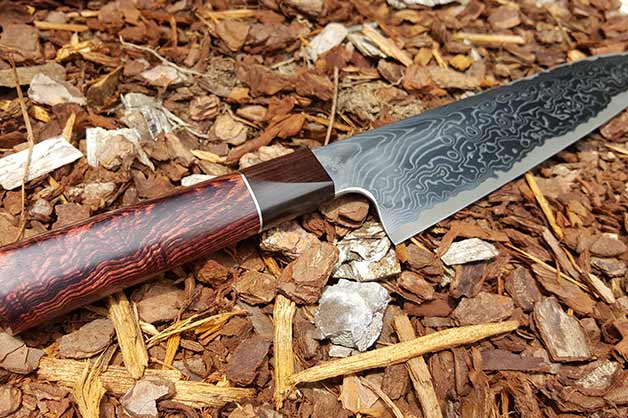
|Image| One of Chadd Smith’s knives using Damascus San Mai steel.
“When a commercial company makes a knife, they’ve got to make a knife that caters for a spectrum of users, so even though they have professional chefs using their knives, they also have to cater for people who want to buy knives for their homes and have the skills or the ability to maintain the knife edge in the best possible way that it’s going to perform. To that end, they generally make the steel in their knives softer than what the steel can actually achieve, to remain functional yet withstand unintentional damage from the home user.” Mr Smith said.
Custom blades take into account the chef’s knife skills, sharpening skills and cutting style, and the most appropriate steel is selected for the individual’s desired blade sharpness, edge retention and knife weight.
Better blades will help in the long run:
Chefs can be up for a slew of health problems associated with standing for long periods, carrying heavy loads and performing repetitive motions, like chopping.
Gold Coast knife maker James Milne of Nyati Blades has spent time researching arthritis and repetitive strain injury (RSI) and how best to alleviate the pain associated with these conditions in the wrist.
|Image| Nyati Blades customise their knives to the specific ergonomic requirements of the user.
“Some chefs like a knife to be balanced at the heel so you have enough weight to push through food, but the knife still needs to feel light and nimble,” Mr Milne said.
“A lot of chefs, if they’re cutting potatoes for hours every day or they’re doing a big food service, they’ll get wrist problems, so I’ve started using blade geometry to make my knives feel lighter, even when they’re not really lighter.”
Milne is also using 3D printing technology to create ergonomic knife handles that relieve arthritic symptoms and are a millimetre-perfect fit for their individual owners.
Karim Haddad runs Tharwa Valley Forge, just south of Canberra, and has been forging blades since the early 1990s. His knives are geared to a level of performance and comfort for individual chefs that would never be possible outside the custom environment.
|Image| Karim Haddad’s knives are made to measure.
“One of the differences in a professional chef’s knife as opposed to one that an occasional cook at home would use is that it’s got to be comfortable for the hand and each person has a different kind of grip. Getting a knife that suits the size of your hand and the way in which you chop is pretty important,” Mr Haddad said.
“One chef I worked with was only five foot tall and had very small hands and she did a lot of prep – she’d be chopping all day – and she’d have bruises under her ribs because the handles of her knives were too long, so we made her a short-handled knife that was perfect for her frame.”
Chef’s essentials:
The consensus among our knifemakers is that early career chefs, and those looking for new knives should resist the temptation to buy into the way advertisers style a “chef’s kitchen” with a factory chef knife set.
Mert Tansu, Executive Chef at the hatted Harvest Restaurant at Hope Estate in the Hunter Valley, is also one of the most respected chef’s knife craftsman in the country. Winner of the Best New Knifemaker accolade at the Sydney Knife Show 2016, Tansu’s blades are informed by more than a decade’s experience in commercial kitchens.
|Image| Mert Tansu says you’ll be surprised by how few knives you actually need.
Mr Tansu said people can be drawn into the idea of large knife sets and spend a substantial amount of money on them, thinking they’ll cover all their needs in the kitchen, but only ever end up using two or three blades in the set.
“You’re better off spending that money on a good gyuto (chef’s knife), sujihiki (carving knife) and a paring knife,” the Executive Chef said.
“These three will cover your basic needs, then depending on the food the individual is cooking, you could also add a boning knife, sashimi knife or vegetable knife (nakiri).”
Grappling with the price tag:
When it comes to any specialty product, be it a sports car or a chef knife set, you get what you pay for. Depending on the knife and the maker, custom chef’s knives can cost anywhere from $200 to several thousand dollars. Bladesmith Chadd Smith says high end precision blades require the expertise of meticulous and experienced artisans.
“To give you an idea of the work that goes into a new knife; every knife I make is measured in about 30 different places so I know each blade will perform exactly as I expect it to,” Mr Smith said. “There are chefs who, after they buy custom knives, choose to only buy custom knives in the future,” Chad Smith said.
The latest trends in chef’s knives:
Sydney knifemaker James Oatley is best known for the beauty and quality of his Japanese-style chef knives and his currently closed books are testimony to the fact that demand for his sushi knives, gyutos and honesukis is booming as Australian and international chefs fall in love with the qualities of Japanese-style blades.
“I set out to make functional art that will inspire and feed creativity, to push boundaries in the kitchen,” Mr Oatley said. “It’s about understanding how the blade will be used, then creating a balance between the hardness of the steel and the shape of the blade in relation to the fine edge.”
|Image| James Oatley is renowned for his Japanese inspired blades.
James Milne has also found the newly fashionable trend for foraging food has gone deeper into chefs’ kitchens, with eco-conscious chefs choosing to apply the philosophy to their tools. This has made recycled and upcycled knives some of Milne’s best selling blades, as chefs like Ben Devlin, of the Gold Coast’s Paper Daisy and ex-Noma and Esquire, become concerned about running restaurants with a minimal ecological footprint.
Alongside higher end, fully custom-made knives, Milne produces recycled knives from off-cuts of quality high carbon steel, with handles also fashioned from recycled materials. He also rescues high end knives that would otherwise have been thrown out, re-grinding them and adding new handles.
Taking care of a custom knife:
Putting a V8 supercar on a bush track will not only render it useless, but also cause the car irreparable damage. So it is with custom knives, Mert Tansu explains.
“If you buy a cheap German knife, you can hack lobsters with it, you can abuse it, you can even use it for hammering, it will survive without too much damage. Custom knives, if you are abusing them, they will break down. But with some care, you can use a custom knife every day for 30 years and it will perform beautifully,” Mr Tansu said.
Good knife-cleaning practices are a must with a custom blade. Chef Tansu recommends keeping the knife clean by wiping it with a cloth as soon as you’ve finished cutting something. This habit will save the knife from rust. He also recommends following the holiest of cutlery commandments; never put a custom knife in the dishwasher, particularly carbon blades, where
harsh chemicals will damage the fine edge and the temper of the steel.
Staying sharp:
Many Australian bladesmiths offer a lifetime of perks that you’d never get from overseas makers – they keep loving your knife long after it’s left their workshop.
“Lots of Australian bladesmiths, like me, offer a lifetime warranty and sharpening,” said James Milne. “It’s a way for me to check on the knife as well and make sure there are no defects and to maintain quality control. Also, it’s not hard for me to sharpen that knife back to its original intended level of sharpness and sharpening geometry, so clients are getting a custom-finished product throughout the life of the knife.”
|Image| Chadd Smith is happy to sharpen his knives as part of their warranty.
Chadd Smith said a well-loved and well-used custom knife can be brought back to its original state after many years in the kitchen, proving that good knives really can live forever.
“Some chefs choose a blade that’s got a soft coating on each side, so that in years to come, they’ve used it and they’ve sharpened it to a point where the bevel is becoming quite wide, but a knife maker or experienced user can then lay it on a coarse stone and thin it down, taking it back to its original blade geometry.”
Dip your toe in:
Not sure about whether a custom knife will suit you? Many Australian knife makers offer the ultimate try-before-you-buy service, called a pass-around.
A few makers will send a group of new knives to chefs for a test drive. In the win-win exchange, chefs get to experience the feel of a handmade knife and put the latest blade geometry to the test in their kitchens, while the makers benefit from feedback on the knife’s performance.
Related Ideas
7 Ways to Survive Service in the Festive Season
Here are our tips, straight from the chef's mouth, on how to survive the festive season in the kitchen
A Chef’s Guide to Gluten Free Baking
Want to know how to turn your bakery goods into a gluten free delight? Check out our gluten free baking guide now.
